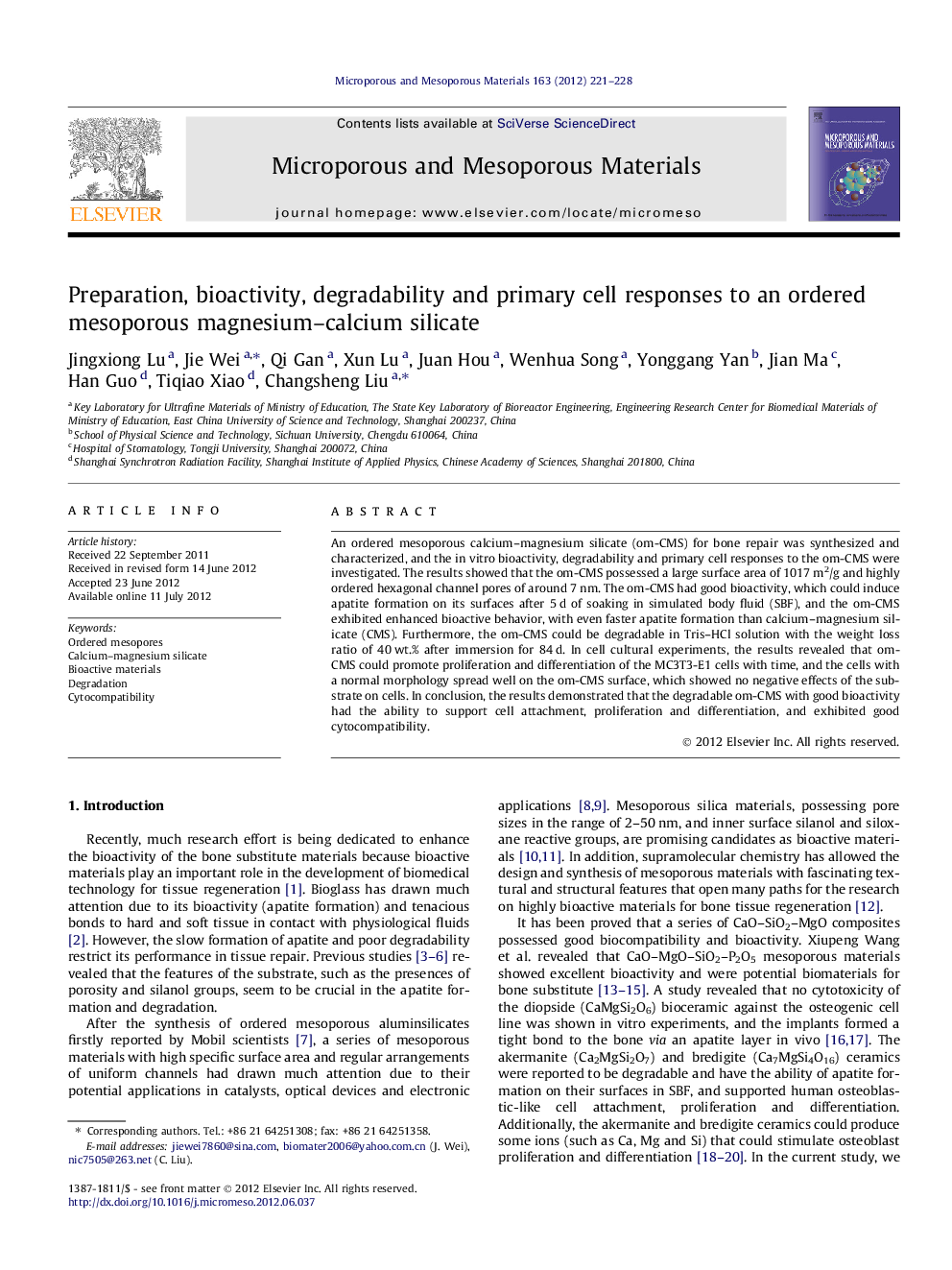| Article ID | Journal | Published Year | Pages | File Type |
|---|---|---|---|---|
| 73994 | Microporous and Mesoporous Materials | 2012 | 8 Pages |
An ordered mesoporous calcium–magnesium silicate (om-CMS) for bone repair was synthesized and characterized, and the in vitro bioactivity, degradability and primary cell responses to the om-CMS were investigated. The results showed that the om-CMS possessed a large surface area of 1017 m2/g and highly ordered hexagonal channel pores of around 7 nm. The om-CMS had good bioactivity, which could induce apatite formation on its surfaces after 5 d of soaking in simulated body fluid (SBF), and the om-CMS exhibited enhanced bioactive behavior, with even faster apatite formation than calcium–magnesium silicate (CMS). Furthermore, the om-CMS could be degradable in Tris–HCl solution with the weight loss ratio of 40 wt.% after immersion for 84 d. In cell cultural experiments, the results revealed that om-CMS could promote proliferation and differentiation of the MC3T3-E1 cells with time, and the cells with a normal morphology spread well on the om-CMS surface, which showed no negative effects of the substrate on cells. In conclusion, the results demonstrated that the degradable om-CMS with good bioactivity had the ability to support cell attachment, proliferation and differentiation, and exhibited good cytocompatibility.
Graphical abstractFigure optionsDownload full-size imageDownload as PowerPoint slideHighlights► This is the first time to synthesize ordered mesoporous CaMgSi2O6. ► The om-CMS exhibited large surface area of 1017 m2/g and pore volume of 1 cm3/g. ► The material shows good bioactivity, degradability and cytocompatibility.
